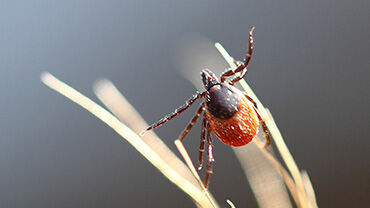Reducing the risk of tick-borne encephalitis this summer
According to the latest ECDC Annual Epidemiological Report (AER) issued today, 3 650 tick-borne encephalitis (TBE) cases were reported in 20 EU/EEA countries in 2022. Most cases occurred between June and November, with July having the highest number of reported cases.
As a vector-borne disease prevalent in many parts of Europe and as one of the leading cases of central nervous system infections that can result in long-term neurological sequelae, TBE contributes considerably to the disease burden in Europe.
Ticks are often found in wooded and grassy areas and can carry various bacteria, viruses, and parasites that can cause serious illnesses in humans. Ticks are most active during the warmer months of the year. Ticks live on the ground and climb onto grasses and bushes up to a height of about 80 cm. There they wait for animals and humans to pass by so that they can latch on. Once on a host, ticks prefer to move to soft skin and hairy areas before biting in those areas. The bite is painless, and it is often not possible to sense a tick moving on the skin.
TBE is one of the most common tick-borne illnesses and can cause fever, aches, and fatigue. In some cases, it can cause serious complications such as paralysis or inflammation of the brain.
A vaccine to prevent TBE is available and is an effective means of prevention.
The risk of getting bitten by a tick is reduced by using insect repellent on exposed skin and wearing protective clothing with long sleeves and long trousers tucked into socks or boots. Socks and trouser legs treated with permethrin-containing insecticide also reduce the risk.
Always inspect the entire body for ticks after outdoor activities. Remove ticks immediately by pulling them straight out ideally with tweezers or a specially designed tick removal tool.







